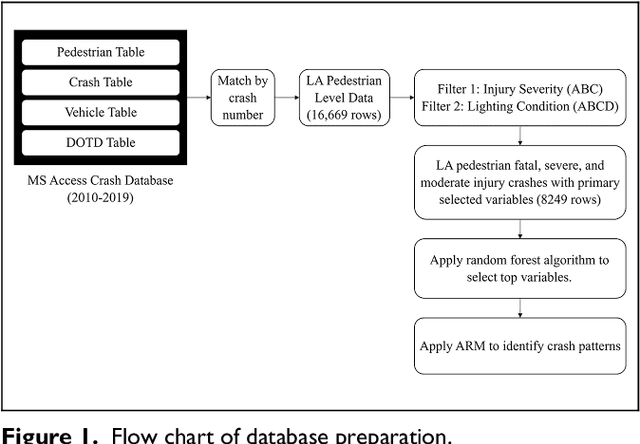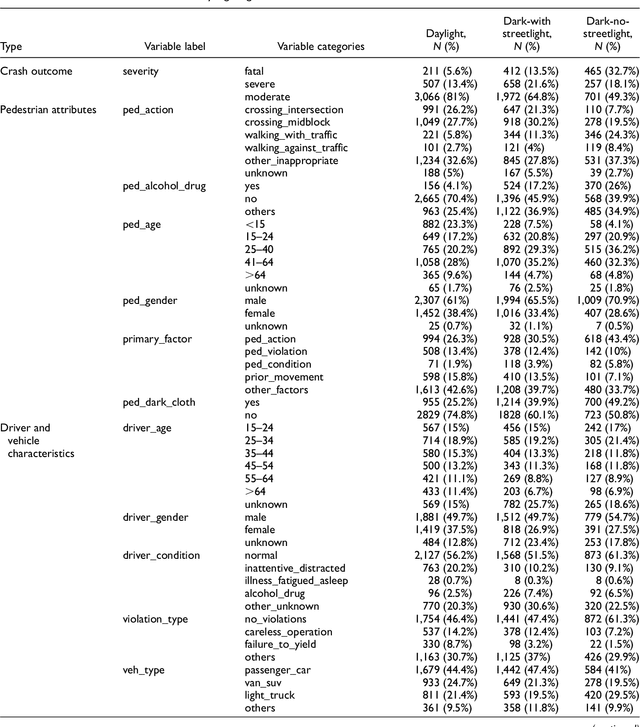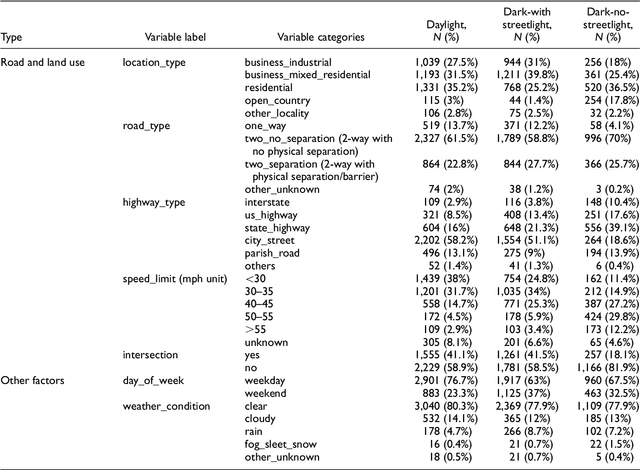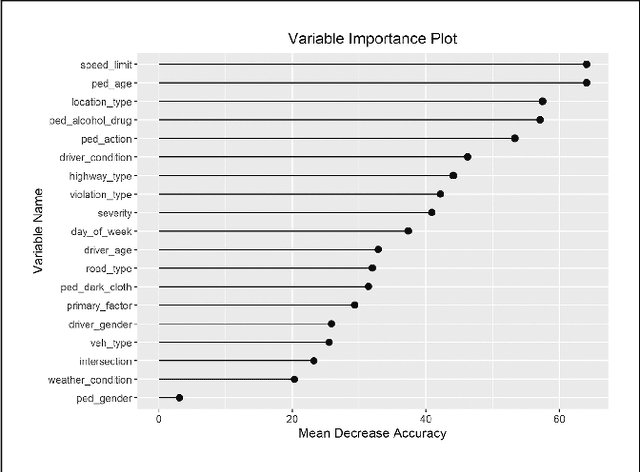Xiaoduan Sun
Identifying roadway departure crash patterns on rural two-lane highways under different lighting conditions: association knowledge using data mining approach
Feb 28, 2023Abstract:More than half of all fatalities on U.S. highways occur due to roadway departure (RwD) each year. Previous research has explored various risk factors that contribute to RwD crashes, however, a comprehensive investigation considering the effect of lighting conditions has been insufficiently addressed. Using the Louisiana Department of Transportation and Development crash database, fatal and injury RwD crashes occurring on rural two-lane (R2L) highways between 2008-2017 were analyzed based on daylight and dark (with/without streetlight). This research employed a safe system approach to explore meaningful complex interactions among multidimensional crash risk factors. To accomplish this, an unsupervised data mining algorithm association rules mining (ARM) was utilized. Based on the generated rules, the findings reveal several interesting crash patterns in the daylight, dark-with-streetlight, and dark-no-streetlight, emphasizing the importance of investigating RwD crash patterns depending on the lighting conditions. In daylight, fatal RwD crashes are associated with cloudy weather conditions, distracted drivers, standing water on the roadway, no seat belt use, and construction zones. In dark lighting conditions (with/without streetlight), the majority of the RwD crashes are associated with alcohol/drug involvement, young drivers (15-24 years), driver condition (e.g., inattentive, distracted, illness/fatigued/asleep) and colliding with animal (s). The findings reveal how certain driver behavior patterns are connected to RwD crashes, such as a strong association between alcohol/drug intoxication and no seat belt usage in the dark-no-streetlight condition. Based on the identified crash patterns and behavioral characteristics under different lighting conditions, the findings could aid researchers and safety specialists in developing the most effective RwD crash mitigation strategies.
Applying Association Rules Mining to Investigate Pedestrian Fatal and Injury Crash Patterns Under Different Lighting Conditions
Nov 06, 2022



Abstract:The pattern of pedestrian crashes varies greatly depending on lighting circumstances, emphasizing the need of examining pedestrian crashes in various lighting conditions. Using Louisiana pedestrian fatal and injury crash data (2010-2019), this study applied Association Rules Mining (ARM) to identify the hidden pattern of crash risk factors according to three different lighting conditions (daylight, dark-with-streetlight, and dark-no-streetlight). Based on the generated rules, the results show that daylight pedestrian crashes are associated with children (less than 15 years), senior pedestrians (greater than 64 years), older drivers (>64 years), and other driving behaviors such as failure to yield, inattentive/distracted, illness/fatigue/asleep. Additionally, young drivers (15-24 years) are involved in severe pedestrian crashes in daylight conditions. This study also found pedestrian alcohol/drug involvement as the most frequent item in the dark-with-streetlight condition. This crash type is particularly associated with pedestrian action (crossing intersection/midblock), driver age (55-64 years), speed limit (30-35 mph), and specific area type (business with mixed residential area). Fatal pedestrian crashes are found to be associated with roadways with high-speed limits (>50 mph) during the dark without streetlight condition. Some other risk factors linked with high-speed limit related crashes are pedestrians walking with/against the traffic, presence of pedestrian dark clothing, pedestrian alcohol/drug involvement. The research findings are expected to provide an improved understanding of the underlying relationships between pedestrian crash risk factors and specific lighting conditions. Highway safety experts can utilize these findings to conduct a decision-making process for selecting effective countermeasures to reduce pedestrian crashes strategically.
 Add to Chrome
Add to Chrome Add to Firefox
Add to Firefox Add to Edge
Add to Edge